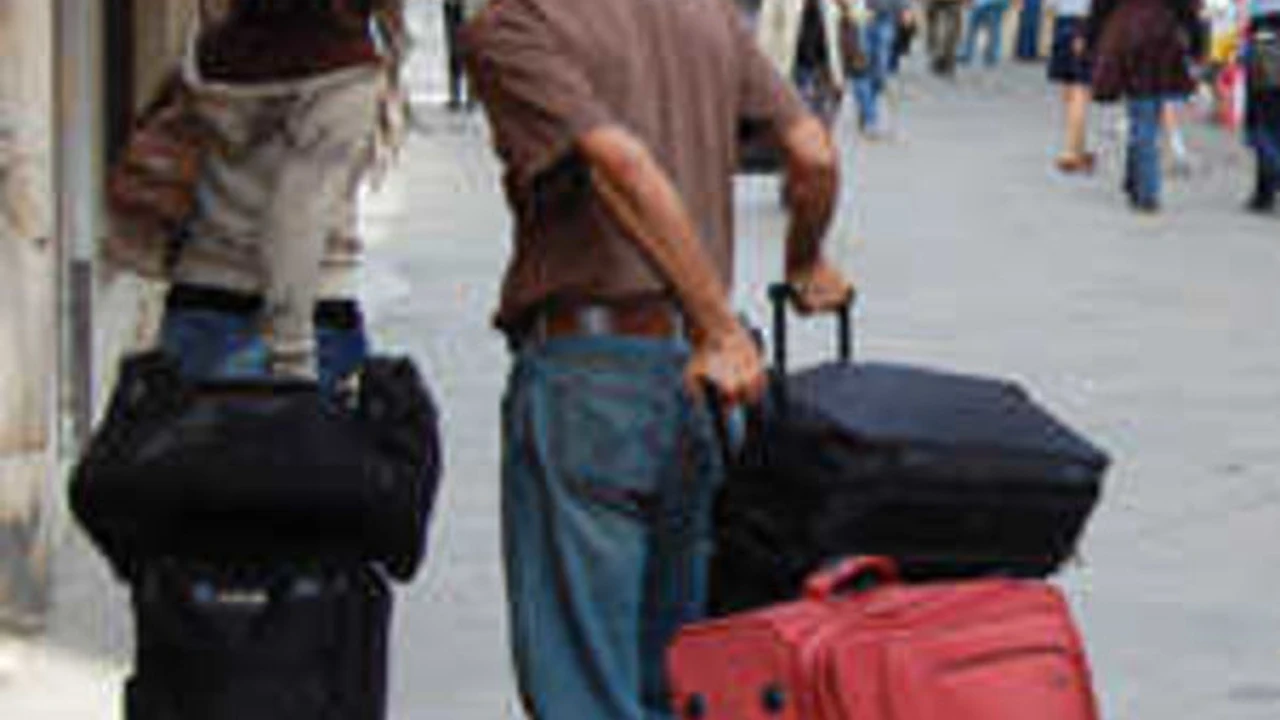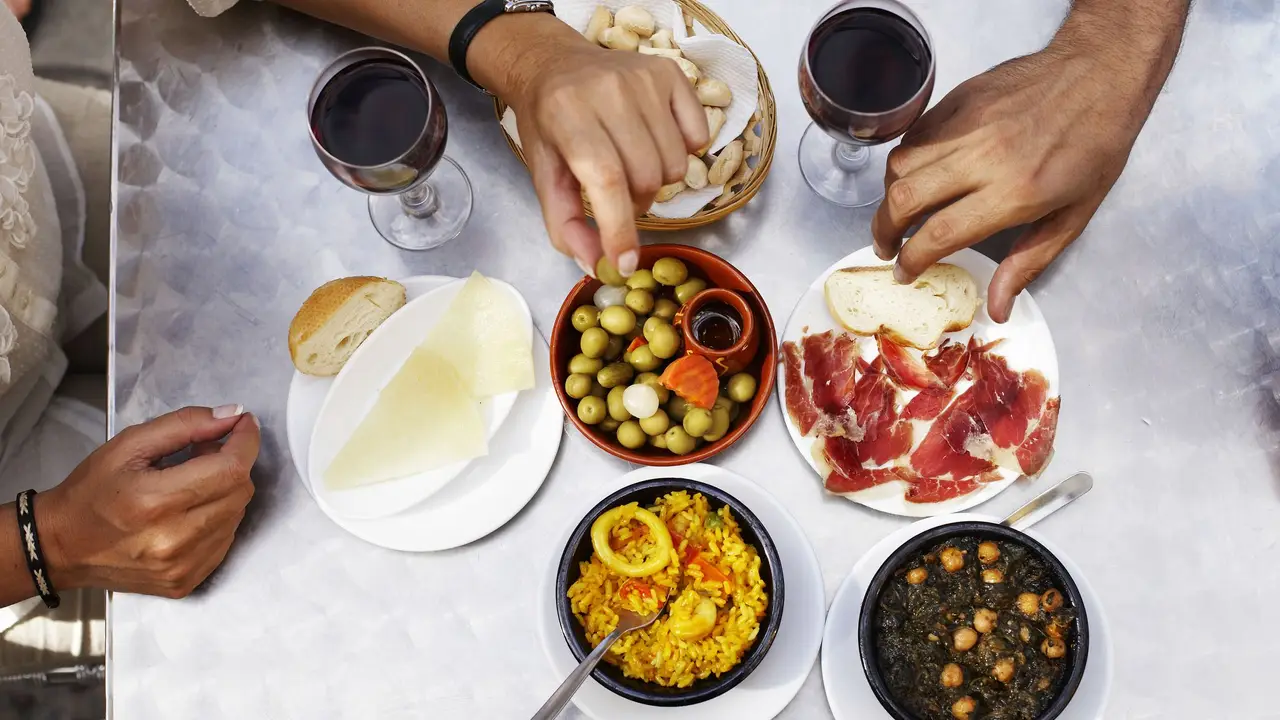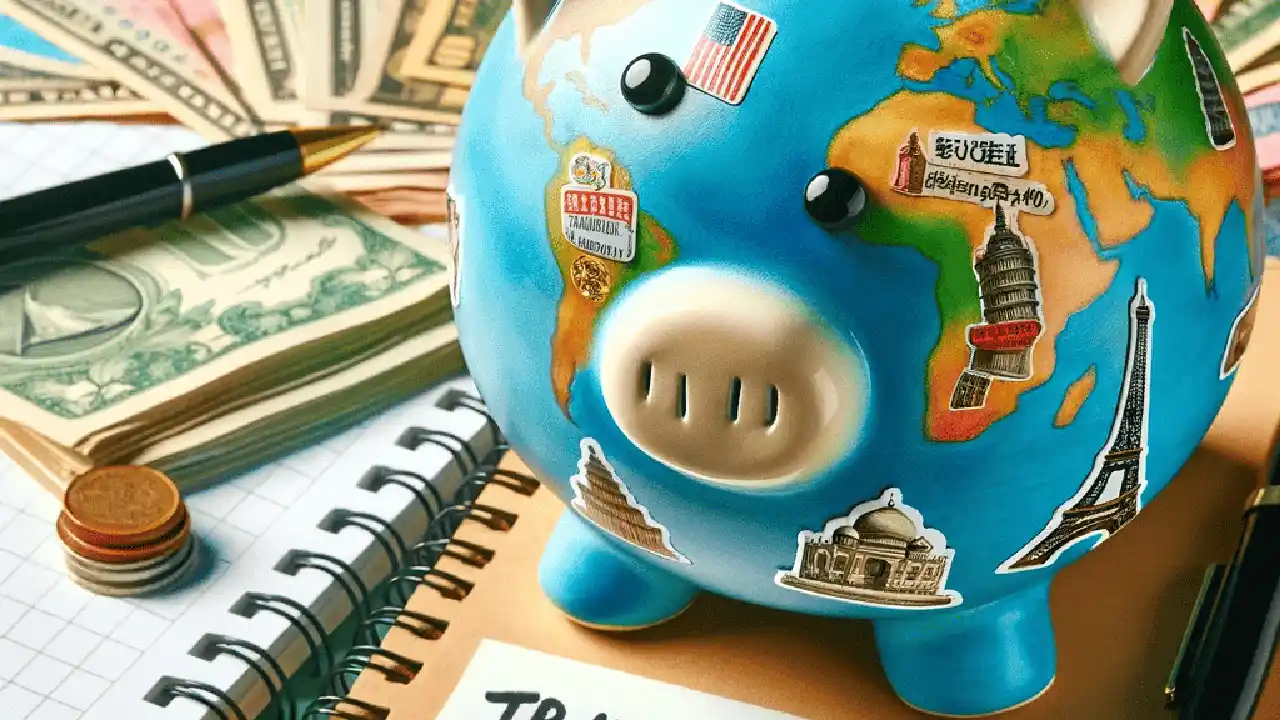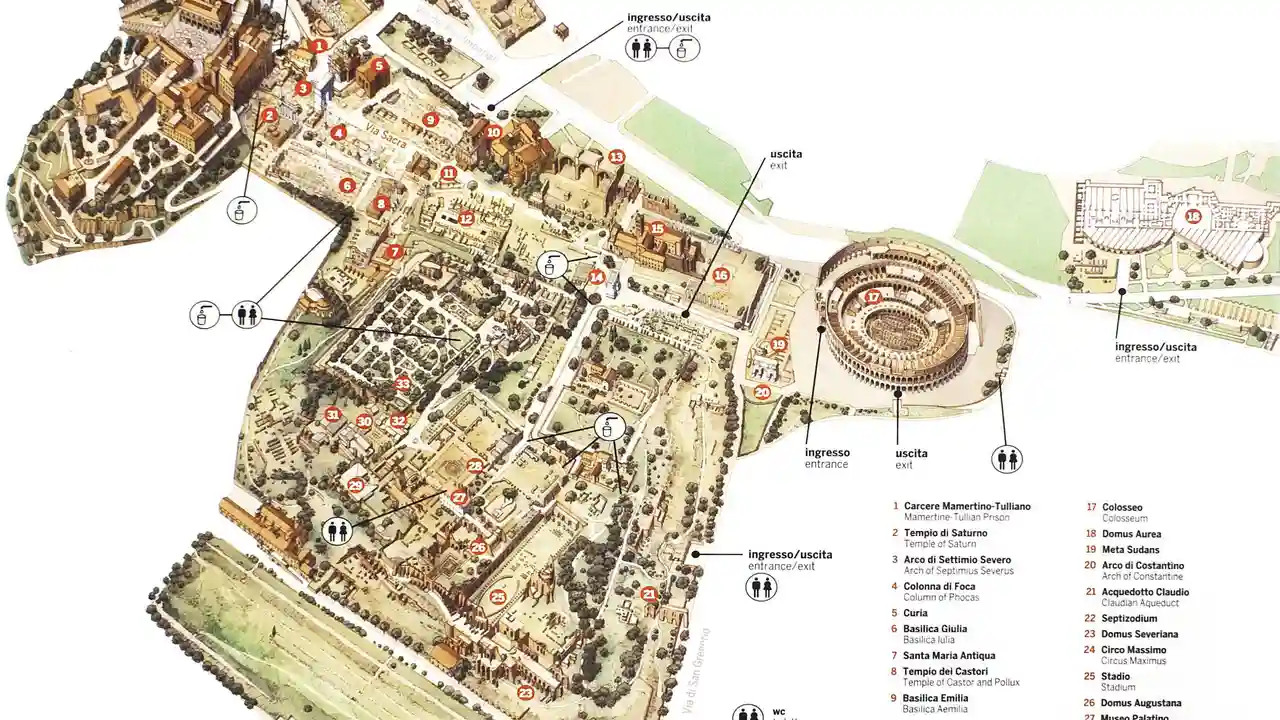Europe Travel: Negotiating Prices at Markets as a US Tourist
Sample meta description.

Understanding the Market Culture in Europe Price Negotiation Tips
So, you're heading to Europe! Awesome choice. From the cobblestone streets of Rome to the charming canals of Amsterdam, European markets are a vibrant tapestry of culture, commerce, and delicious treats. But as a US tourist, navigating the art of negotiation can feel a bit daunting. Don't worry, I'm here to equip you with the insider knowledge to haggle like a pro and snag some fantastic deals. Forget the awkward silences and potential overpaying – let's dive in!
First things first: understand that market culture varies wildly across Europe. What's acceptable in Marrakech might be considered rude in Munich. Generally, in Southern and Eastern Europe (think Italy, Spain, Greece, Turkey, even parts of France), negotiation is more common and often expected, especially in smaller, independent stalls. In Northern Europe (Germany, Netherlands, Scandinavia), prices are usually more fixed, particularly in larger, more established markets. Observe the locals – are they bargaining? That's your cue!
It's also important to remember that these are often family-run businesses, and the vendors are proud of their products. Treat them with respect and kindness. A smile and a friendly "Bonjour," "Buongiorno," or "Hola" go a long way. Don't start haggling aggressively; a polite and respectful approach is always best.
Europe Market Research Understanding Local Customs and Tourist Traps
Before you even step foot in a market, do a little research! Knowing the average price of similar items will give you a baseline for negotiation. Check out local blogs, travel forums, or even ask your hotel staff for price ranges. This prevents you from getting ripped off in tourist traps, which are plentiful in popular destinations.
Speaking of tourist traps, be aware of their tactics. These markets often feature lower-quality goods at inflated prices, relying on the ignorance of tourists. They might also use aggressive sales techniques. If something feels off, trust your gut and walk away. There are plenty of other markets to explore!
Also, be mindful of the local currency. Familiarize yourself with the exchange rate so you know exactly what you're paying. Some vendors might accept US dollars, but the exchange rate will likely be unfavorable.
Opening the Negotiation The Art of Polite Haggling in European Markets
Now, let's get down to the nitty-gritty. How do you actually start negotiating? Start by expressing genuine interest in the item. Ask questions about its origin, materials, or craftsmanship. This shows the vendor that you appreciate their work and aren't just looking for the cheapest deal. Then, after they state the price, pause for a moment. Don't immediately accept it. A simple, "Is that your best price?" can work wonders.
If the price is still too high, offer a counteroffer that's lower than what you're willing to pay, but not ridiculously low. Aim for about 20-30% off the initial price. Be prepared for them to counteroffer again. The negotiation process is a dance, a back-and-forth until you reach a mutually agreeable price. Keep it lighthearted and friendly. Remember, it's not about "winning," it's about finding a fair price for both of you.
Don't be afraid to walk away! Sometimes, the best way to get a better price is to simply start walking away. The vendor might call you back with a lower offer. If they don't, it wasn't meant to be. There are plenty of other treasures to be found.
Language Barriers Overcoming Communication Challenges in European Markets
Language barriers can definitely add a layer of complexity to the negotiation process. Learning a few basic phrases in the local language ("Hello," "Thank you," "How much does this cost?") will be greatly appreciated. Even a small effort shows respect and can help build rapport.
If you don't speak the language, don't worry! Pointing, gesturing, and using a calculator or your phone's translation app can work wonders. Many vendors in tourist areas speak some English, but don't rely on it. Prepare yourself with some basic translation tools.
Body language is also key. Maintain eye contact, smile, and use open and friendly gestures. A positive attitude can bridge the language gap and make the negotiation process smoother.
Payment Methods Cash Versus Card in European Market Transactions
Cash is king in most European markets, especially smaller stalls. Credit cards are becoming more widely accepted, but it's always a good idea to have cash on hand. Before you travel, check with your bank about international transaction fees. You might be better off withdrawing cash from an ATM upon arrival.
Be aware of pickpockets! Keep your cash in a secure place, such as a money belt or a hidden pocket. Don't flash large amounts of cash in public. When paying, try to have smaller denominations available so you don't have to break a large bill and draw attention to yourself.
If you're paying with a credit card, be sure to check the exchange rate and any associated fees. Some vendors might add a surcharge for credit card transactions. It's always a good idea to ask beforehand.
Recommended Products and Price Negotiation Strategies in Different Market Categories
Alright, let's get specific! Here are some popular items you might find in European markets, along with negotiation strategies and product recommendations:
Leather Goods Price Negotiation Tips
Leather goods are a classic European souvenir. Look for handcrafted leather bags, wallets, belts, and jackets. In Italy and Spain, you can find beautiful leather items at reasonable prices. Negotiation is definitely expected here, especially in smaller, family-run stalls.
Product Recommendation: A handcrafted leather shoulder bag from Florence, Italy. Look for genuine leather with good stitching and a classic design. Usage Scenario: Perfect for everyday use, travel, or as a stylish accessory. Comparison: Compared to mass-produced leather bags, handcrafted leather bags are more durable, unique, and often have a better quality finish. Price: Expect to pay around €80-€150 for a good quality leather shoulder bag. Start your negotiation at around €60-€100.
Ceramics and Pottery Price Negotiation Tips
From colorful Portuguese tiles to delicate Italian ceramics, European markets are brimming with beautiful pottery. These make great souvenirs or gifts. Pay attention to the craftsmanship and design. Again, negotiation is usually acceptable, especially in Southern Europe.
Product Recommendation: Hand-painted Portuguese tiles from Lisbon. These tiles are vibrant, unique, and make a beautiful addition to any home. Usage Scenario: Use them as decorative accents, coasters, or even frame them as art. Comparison: Compared to machine-printed tiles, hand-painted tiles have a unique character and artistic flair. Price: Expect to pay around €5-€10 per tile. Try to negotiate a discount if you're buying multiple tiles.
Textiles and Fabrics Price Negotiation Tips
European markets are treasure troves of textiles, from silk scarves to linen tablecloths. Look for unique patterns, high-quality materials, and intricate embroidery. Be mindful of the origin and authenticity of the fabrics.
Product Recommendation: A handwoven wool scarf from Scotland. Scottish wool is known for its softness, warmth, and durability. Usage Scenario: Perfect for keeping warm in chilly weather or as a stylish accessory. Comparison: Compared to synthetic scarves, wool scarves are more breathable, warmer, and more sustainable. Price: Expect to pay around £30-£60 for a good quality wool scarf. Start your negotiation at around £20-£40.
Food and Spices Price Negotiation Tips
Don't forget the food! European markets are a feast for the senses. Sample local cheeses, cured meats, fresh produce, and aromatic spices. While negotiation might not be appropriate for smaller items like a single apple, you can often negotiate a discount if you're buying larger quantities, especially of spices or dried goods.
Product Recommendation: A selection of local cheeses from France. French cheeses are renowned for their variety and flavor. Usage Scenario: Perfect for a cheese board, a picnic, or simply enjoying with a glass of wine. Comparison: Compared to mass-produced cheeses, artisanal cheeses have a more complex flavor and are often made with higher-quality ingredients. Price: Expect to pay around €5-€15 per cheese, depending on the type and size. Ask for a discount if you're buying a selection of cheeses.
Antiques and Vintage Items Price Negotiation Tips
If you're a fan of antiques and vintage treasures, European markets are a goldmine. Look for unique jewelry, vintage clothing, antique furniture, and quirky collectibles. Negotiation is definitely expected here, and research is key. Know the value of the items you're interested in before you start haggling.
Product Recommendation: A vintage brooch from a Parisian flea market. These brooches are often unique, stylish, and can add a touch of vintage charm to any outfit. Usage Scenario: Wear it on a jacket, a scarf, or a bag. Comparison: Compared to modern brooches, vintage brooches often have a more intricate design and a unique history. Price: Expect to pay around €20-€50 for a vintage brooch, depending on its age, condition, and rarity. Start your negotiation at around €15-€30.
Specific Product Recommendations and Detailed Information
Let's dive deeper into some specific product recommendations with detailed information, including usage scenarios, comparisons, and price ranges:
Italian Leather Wallet Detailed Product Breakdown
Product: Handcrafted Italian Leather Wallet (Bifold or Trifold)
Material: Full-grain Italian leather (e.g., vegetable-tanned Tuscan leather)
Features: Multiple card slots, bill compartment, coin pocket (optional), RFID blocking (optional)
Usage Scenario: Everyday use, travel, gift
Comparison:
- Handcrafted vs. Mass-produced: Handcrafted wallets offer superior quality, durability, and a unique character. Mass-produced wallets are often made with lower-quality materials and lack the attention to detail.
- Full-grain vs. Genuine Leather: Full-grain leather is the highest quality leather, known for its durability and natural grain. Genuine leather is a lower grade of leather that is often split and treated.
Price Range: €50 - €120 (depending on the leather quality, design, and features)
Negotiation Strategy: Start by inspecting the wallet carefully. Look for any imperfections or flaws. Ask about the type of leather and the craftsmanship. If you're buying multiple items from the same vendor, ask for a discount. Start your negotiation at around 20-30% off the initial price.
French Lavender Soap Detailed Product Breakdown
Product: Artisanal French Lavender Soap (Savon de Marseille)
Ingredients: Olive oil, lavender essential oil, water, sodium hydroxide
Features: Natural ingredients, gentle on the skin, soothing lavender scent
Usage Scenario: Bathing, hand washing, aromatherapy
Comparison:
- Artisanal vs. Commercial Soap: Artisanal soaps are made with natural ingredients and traditional methods, resulting in a higher-quality and more gentle product. Commercial soaps often contain harsh chemicals and synthetic fragrances.
- Lavender Essential Oil vs. Synthetic Fragrance: Lavender essential oil provides a natural and therapeutic scent, while synthetic fragrances can be irritating to the skin.
Price Range: €3 - €8 per bar (depending on the size and ingredients)
Negotiation Strategy: Ask about the ingredients and the origin of the soap. If you're buying multiple bars, ask for a discount. You might not be able to negotiate a significant discount on individual bars, but you can often get a better price on larger quantities.
Turkish Delight Detailed Product Breakdown
Product: Authentic Turkish Delight (Lokum)
Ingredients: Sugar, starch, water, rosewater, nuts (e.g., pistachios, walnuts), flavoring
Features: Soft and chewy texture, sweet and fragrant flavor, variety of flavors and fillings
Usage Scenario: Dessert, snack, gift
Comparison:
- Authentic vs. Mass-produced Turkish Delight: Authentic Turkish Delight is made with high-quality ingredients and traditional methods, resulting in a superior taste and texture. Mass-produced Turkish Delight often contains artificial flavors and preservatives.
- Variety of Flavors and Fillings: Look for Turkish Delight with a variety of flavors and fillings, such as rosewater, pistachio, walnut, and hazelnut.
Price Range: €5 - €15 per box (depending on the size and ingredients)
Negotiation Strategy: Sample different flavors before you buy. If you're buying a large quantity, ask for a discount. You can often negotiate a better price if you're buying from a smaller, independent vendor.
Final Tips for Successful Market Negotiation in Europe
Okay, you're almost ready to conquer those European markets! Here are a few final tips to keep in mind:
- Be confident but respectful.
- Don't be afraid to walk away.
- Have fun!
- Trust your gut.
- Enjoy the experience!
By following these tips, you'll be well on your way to becoming a master negotiator and snagging some incredible deals in European markets. Happy travels and happy haggling!
:max_bytes(150000):strip_icc()/277019-baked-pork-chops-with-cream-of-mushroom-soup-DDMFS-beauty-4x3-BG-7505-5762b731cf30447d9cbbbbbf387beafa.jpg)






